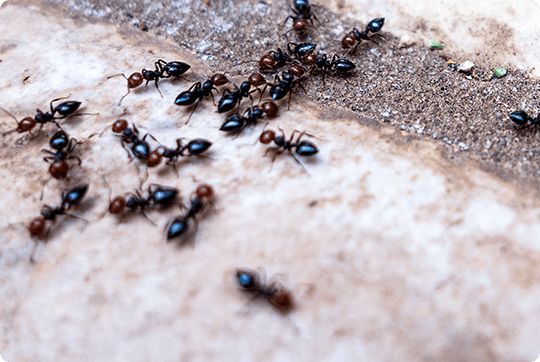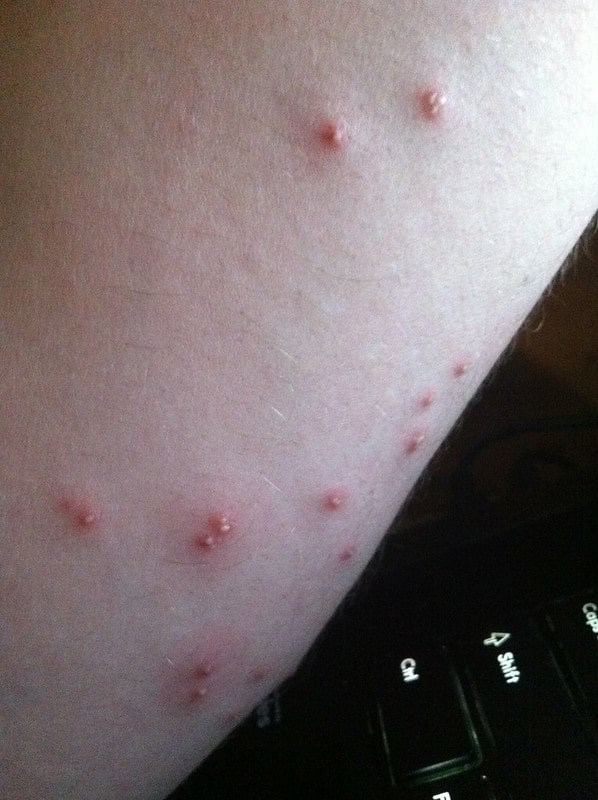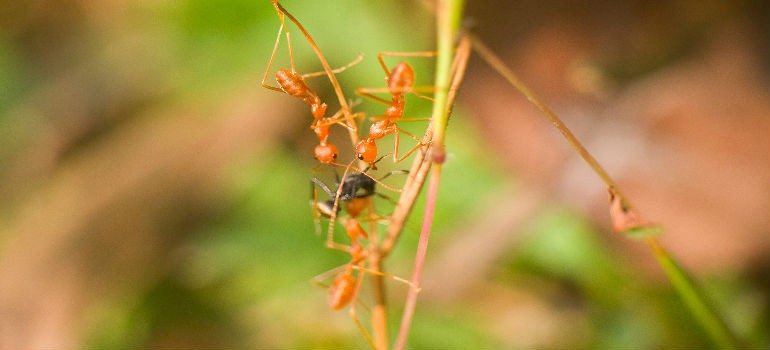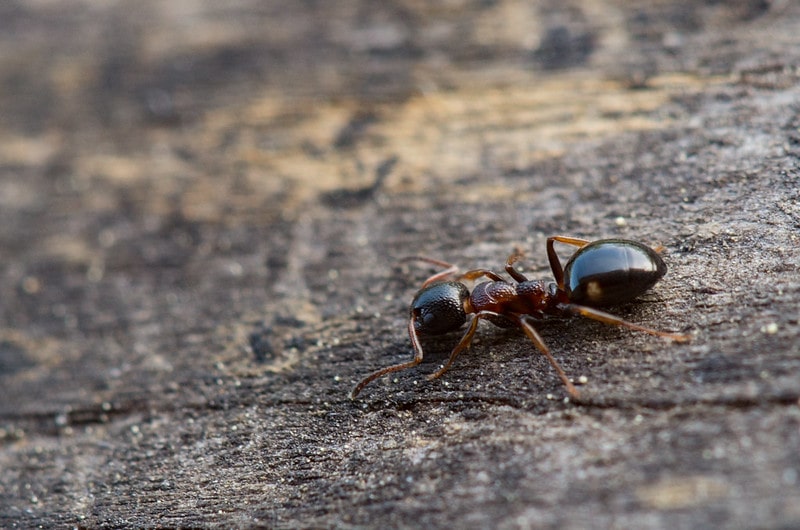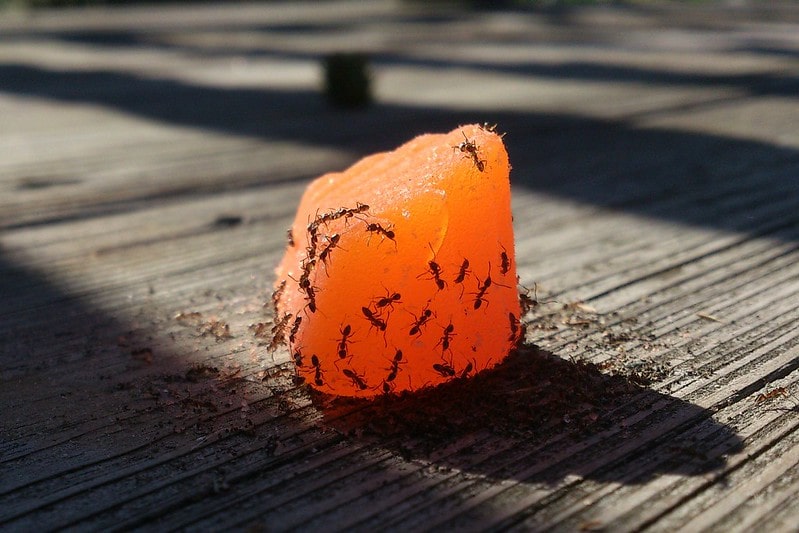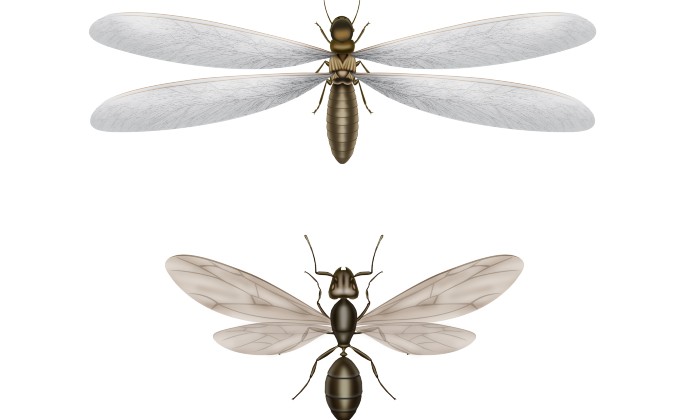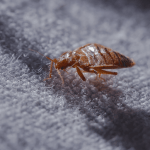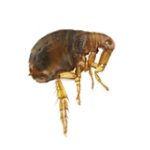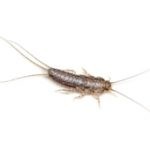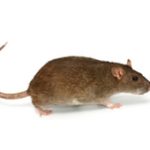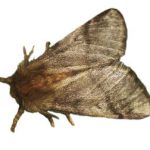Find and Eliminate Ants Nest
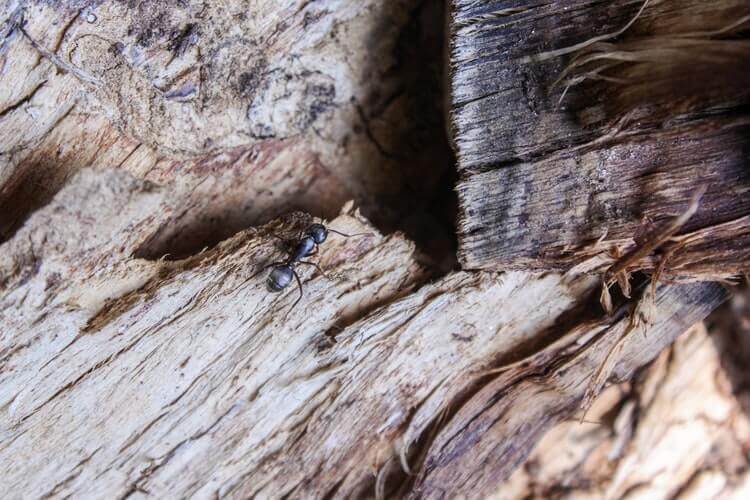
Photo by Chandler Cruttenden on Unsplash
House ants are a common pest, often nesting in walls, kitchens, and hidden crevices where they have access to food and moisture. For effective ant control, it is important to locate an ant nest inside the house instead of treating only the visible trails.
Ants are social insects and live in colonies where they are all family. Every ant in the colony works for the good of the entire family. They are a well-organised machine, every ant has its role and job to contribute to the colony.
That being said, according to their nesting habits, ants’ nests can be divided into three major groups. First, nests in soil, second – nests in wood, and third – opportunistic nests. Here, we will talk about the ant nest types and where do ants nest in your home.
Signs of an ant nest indoors
Identifying an ant infestation early can help prevent a larger colony from forming. Look for these signs:
- Visible ant trails leading to a food or water source;
- Small piles of debris or discarded ant wings;
- Wood damage (especially with carpenter ants nesting in walls);
- Ant activity in moist areas, such as under sinks or near appliances;
Types of ant nests
Ant nests come in all shapes and sizes. The nests of ants provide shelter from their enemies, as well as the environment around them. Ants build nests so that they can safely raise their offspring. Also, nests provide protection for ants and their queens. Most ant colonies would die out very quickly without nests.
- Soil ants nests – These are the most common types of nests. Soil is easily available and many areas and it isn’t treated with pesticides or other chemicals harmful to the ants. Soil nests are also the most common for most ant species in the world, not just in the UK. You’ve probably seen them hundreds of times in the park. Anthills scattered on the ground between flower beds. Since ants build soil nets, they move some of it around thus making the soil ecosystem a service. They have a positive impact on plants and other animals who live near the ant nests.
- Wood nesting ants – You may have seen some of these ants. Some ant colonies make their nests in hollow parts of trees. Usually, the tree is rotting, or dying, has fungi, or there’s a lot of moisture. Carpenter ants are a species that often nest in hollow trees, but other species can like it too. The ants do not eat wood, they nest in it.
- Opportunist ants’ nests – Opportunistic nesting ants are adaptable to various environments. They require a place with moisture, protection, and easy access to food. This means they are more likely to make a nest in your home. Any holes or cracks in the exterior of your house’s walls can become their home too. They will also get inside your home and steal your food.
- Simple ants’ nests – These nests often are unnoticeable by humans unless you find them by accident. Most often simple ants’ nests are built underneath logs, stones, or other large objects and have only one tunnel that leads to the nest.
- Complex ants’ nests – The counterpart of simple nests is the complex underground nests that comprise complex networks of interlocking tunnels. An example of this is the leafcutter ant society that builds nests with thousands of rooms that can reach up to 0.5 square kilometres.
A typical ant colony comprises “collections of workers, reproductive individuals, and brood that live together, cooperate, and treat one another non-aggressively”, according to Wikipedia. There is one (sometimes more than one) egg-laying queen, hundreds of workers and soldiers (sterile females), and hundreds of winged males and females (non-sterile). These three groups are called castes.
What does an ant nest look like?
In an ant nest, tunnels and chambers are interconnected, forming a complex underground structure. Depending on the ant species, soil type, and environmental conditions, these structures can vary greatly. What ant nests look like in general:
Most commonly, outdoor ant nests appear as small mounds (ant hill) of fine soil or sand with a central opening. Some nests are hidden under rocks, logs, or within cracks in pavements. Underground ant nests can be extensive, with multiple chambers and tunnels housing the colony.
Inside buildings, ants may nest in wall voids, under floors, or inside wooden structures, often remaining unseen except for worker ants foraging for food. Some species, like carpenter ants, burrow into wood, leaving behind sawdust-like debris.
If you’ve seen a couple of ants on your kitchen floor or counter, there are usually a lot more. Ants can enter your home through various entry points, including structural damage, a crack in the door or window, or an open door or window.
Where do ants build nests in houses?
Ants seek warm, hidden spaces to establish colonies. Common ants nesting locations include:
- Behind or under appliances. Large appliances such as dishwashers, refrigerators, laundry machines, ovens, dryers, etc. offer the ideal hiding place for ants.
- Behind walls and baseboards. Behind wallpapers is also a place where ants can build nests.
- Check the under-sink cabinet because ants may also be around the drain. Plus, that cabinet is rarely opened and is the perfect hiding place.
- In cracks and crevices behind kitchen cabinets and pantries.
- In damp wood, near leaky pipes or basements.
- Under floorboards can also be a nest, but only professional ant exterminators can find them and take care of such a nest.
These are the most common places ants nest indoors. Finding and eliminating an ants nest in the house is essential for effective ant pest control. By using ant bait stations, sealing entry points, and hiring professional exterminators, you can ensure long-term ant prevention.
Ant exterminator near you
Speak with our team to schedule an ant control service
How to find an ants nest in the house?
When you spot ants in your home, you should follow them and see where they hide. There can be a couple of ants at once in your home, or the entire colony may be passing through your home. First, you should inspect the area inside your home that you spotted them in and find where their entry point is. If you live in a house with a garden, the nest is most likely there.
- Follow the ant trails – Ants follow pheromone trails to food sources. Observe their movement and trace them back to their nest location.
- Check for moisture and food sources – Ants are attracted to sweet foods, grease, and moisture. Inspect areas near sinks, pet food bowls, and garbage bins.
- Look for dead ants – if you spot a place with a bunch of dead ants, it’s almost certain that the nest is nearby.
- Tap on walls and listen for hollow sounds – Carpenter ants nest in wood, often creating hollow cavities. If tapping on wood produces a papery sound, the nest may be inside.
Tracking the ants you see in your home is crucial, but it may not be as effective. If you follow them and they disappear underneath the floorboards, for example, you will never know where exactly they are going. Severe infestations require pest control for ants. Ant exterminators use advanced treatments such as ant fumigation, dust insecticides, and baiting techniques for complete extermination.
How to get rid of ants’ nest in the house?
Getting rid of an ant nest in your house requires locating the nest, using effective treatments, and taking preventative measures. Here are some steps and methods to eliminate ant nest:
- Follow ant trails to find their entry points and nesting areas;
- Place sugar-based or protein-based ant baits near the trails;
- Use residual insecticide sprays around entry points. Dust formulations work well for wall voids and hidden nests;
- Store food in airtight containers and wipe away food crumbs and spills immediately;
If you’re only seeing a couple of ants here and there, and not an entire colony, you can use some baits to test and check which would be the most effective pest control method to use. In the area where you see the ants (most commonly in the kitchen or bathroom) in two corners put peanut butter and honey. Based on which treat they attack, this would be the type of ant bait to use against them. If they are drawn to the honey, you should use sugar-based baits to get rid of them. But if they are drawn to peanut butter, use protein-based ones.
Does boiling water get rid of ants’ nests?
Yes, pouring boiling water into an ant nest can kill many ants, including the queen if the water reaches deep enough. However, it is not always a permanent solution, as:
- The water may not reach all tunnels, allowing surviving ants to rebuild.
- Some colonies have multiple queens, meaning the nest can recover.
- Deep nests, like those of fire ants or carpenter ants, may require several treatments.
Boiling water can be an effective tool for controlling ant infestations, but it is often more effective when combined with other methods, such as using ant baits or sealing entry points, in order to eradicate the colony completely.
How to stop ants nesting in plant pots?
Do you see ants going into your potted plants? They can be attracted to some plants’ honeydew or the moisture in the soil. Also, they can chase aphids, mealybugs, or scales that hide in your potted plants. To stop ants nesting in plant pots, you can try any or a combination of the following:
- Ants stay away from citrus fruits, you may sprinkle some citrus juice or peels around or inside the pots. They should keep the ants away.
- Cinnamon is also something they dislike. You can sprinkle some ground cinnamon around the pot.
- Diatomaceous earth is also effective. Do not sprinkle it on the soil, only around the pot.
- Insecticide of any kind – a spray, bait, gel. Whichever, you’re recommended at the store. Do not spray the plants and their soil.
You can also apply these methods to your home. Sprinkle these products around doors, windows, and corners of the rooms where you see ants most often.
Read more: Where Do Insects Go in the Winter
How many ants are in a nest?
The number of ants in a nest depends on their species and the time of the year. When it comes time for reproduction, some flying ants will leave the nest looking for mates. However, on average an ants’ nest can have from a hundred to thousands of workers, males, and ant queens.
The number of ants in a nest depends on the species and colony size.
- Small colonies (black garden ants) may have a few hundred to a few thousand ants.
- Medium-sized colonies (carpenter ants) can contain tens of thousands of individuals.
- Large colonies (fire ants) often exceed 100,000 ants.
- Supercolonies (Argentine ants) can house millions or even billions of ants, spanning vast areas with multiple interconnected nests.
What happens if you disturb an ant nest?
Disturbing an ant nest can trigger an immediate defensive response from the colony. Worker ants may swarm out aggressively to protect their nest, and some species, such as fire ants, will bite or sting. If the disturbance is severe, the colony may relocate to a new site.
In the case of larger nests, such as those of carpenter ants, disturbing the structure may expose tunnels and chambers but might not eliminate the colony, as they often have multiple nesting sites. Some ants, like army ants, will quickly move their entire colony if their nest is compromised.
What if ants keep appearing?
When you’ve taken some steps and measures to get rid of the ants‘ nest in your home or cut off their access, but they keep re-appearing, there’s only one thing left to do. You should get help from professional pest controllers.
Final thoughts
Locating ant nests is crucial for preventing infestations. By identifying signs of ant activity early and understanding the behaviours of various ant species, you can take effective action. Professional pest control services offer the expertise and solutions needed to tackle persistent or widespread infestations, ensuring your home remains safe and free from these unwanted pests.
We only produce educational information according to the experience and professional knowledge of the pest technicians. We don’t provide any medical advice.



